| A | B |
|---|
A slab on the top of a capital of a column,  | abacus |
Small shrubs native to the Mediterranean and having leaves with spiny margins and showy spikes of white or purplish flowers. Associated with Corinthian Order., 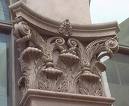 | acanthus |
| The lowest of the three main parts of an entablature: the undecorated lintel resting on the columns. | architrave, 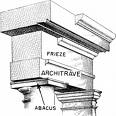 |
A curved or pointed structural member which is supported at the sides or ends., 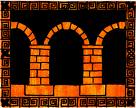 | arch |
The head or crowning feature of a column or pilaster., 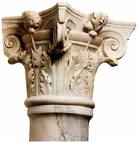 | capital |
Sculpted female figure used in place of a column to support an entablature.,  | caryatid |
| The most ornate of the five classical orders, characterized by a slender fluted column having an ornate, bell-shaped capital decorated with acanthus leaves. | Corinthian Order, 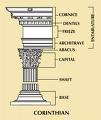 |
A decorative molded projection at the top of a wall, window or construction. The upper part of an entablature.,  | cornice |
A small rectangular block used in a series forming a molding under a cornice.,  | dentil |
| A convex roof. | dome, 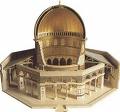 |
| Oldest and simplest of the three orders of classical Greek architecture, characterized by heavy, fluted columns, plain saucer-shaped capitals and no base. | Doric Order,  |
| A convex molding just below the abacus of a Doric capital. | echinus,  |
The upper part of an order, consisting of architrave, frieze, and cornice.,  | entablature |
The very slight convex curve used on Greek and later columns to correct the optical illusion of concavity which would result if the sides were straight., 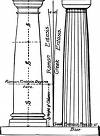 | entasis |
| A decorative motif consisting of a series of uniform, usually vertical, flutes (grooves). | fluting,  |
A decorative design contained within a band or border, consisting of repeated, often geometric figures. Also called "key pattern.",  | fret |
| The plain or decorated horizontal part of an entablature between the cornice and the architrave. | frieze, 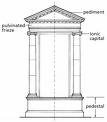 |
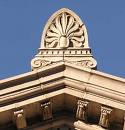 | honeysuckle:an ornament of honeysuckle or palm leaves in a radiating cluster; allso called anthemion. |
| An order of classical Greek architecture characterized by two opposed volutes in the capital. | Ionic Order,  |
| The horizontal beam that forms the upper member of a window or door frame and supports the structure above it. | lintel,  |
Any of the spaces between two triglyphs on a Doric frieze., 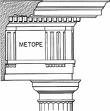 | metope,  |
| In classical architecture, a column with base (usually), shaft, capital, and entablature, decorated and proportioned according to one of the five accepted modes. | order,  |
| In classical architecture a low-pitched triangular gable above a facade, or a smaller version over porticos above the doorway or above a window. A triangular gable end of the roof above the horizontal cornice, often with sculpture. | pediment,  |
A series of columns surrounding a building or enclosing a court.,  | peristyle |
A partial column projecting only slightly from a wall and, in classical architecture, conforming with one of the orders.,  | pilaster |
Ornament in a Doric frieze, consisting of raised blocks of three vertical bands separated by V-shaped grooves, alternating with plain or sculptured panels called metopes., 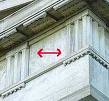 | triglyph |
| A rigid framework, as of wooden beams or metal bars, designed to support a structure, such as a roof. | truss,  |
The ornamental recessed space or panel enclosed by the molding of a pediment. Also the space between an arch and the lintel of a door or window., 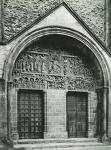 | tympanum |
A spiral scroll on an Ionic capital; smaller versions appear on Ionic, Composite and Corinthian capitals., 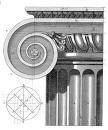 | volute |
A supporting pillar usually consisting of a base, a cylindrical shaft, and a capital., 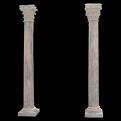 | column |